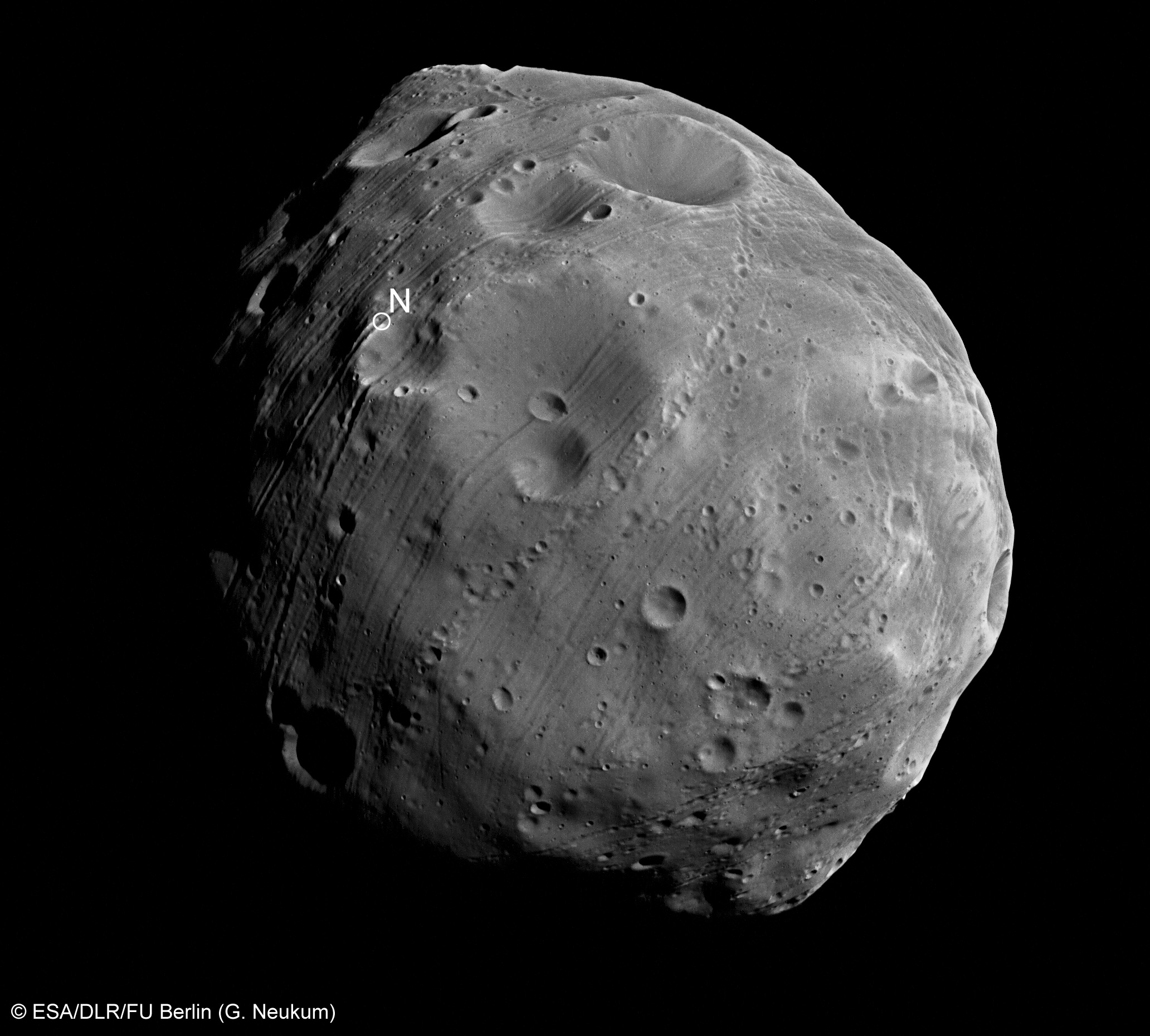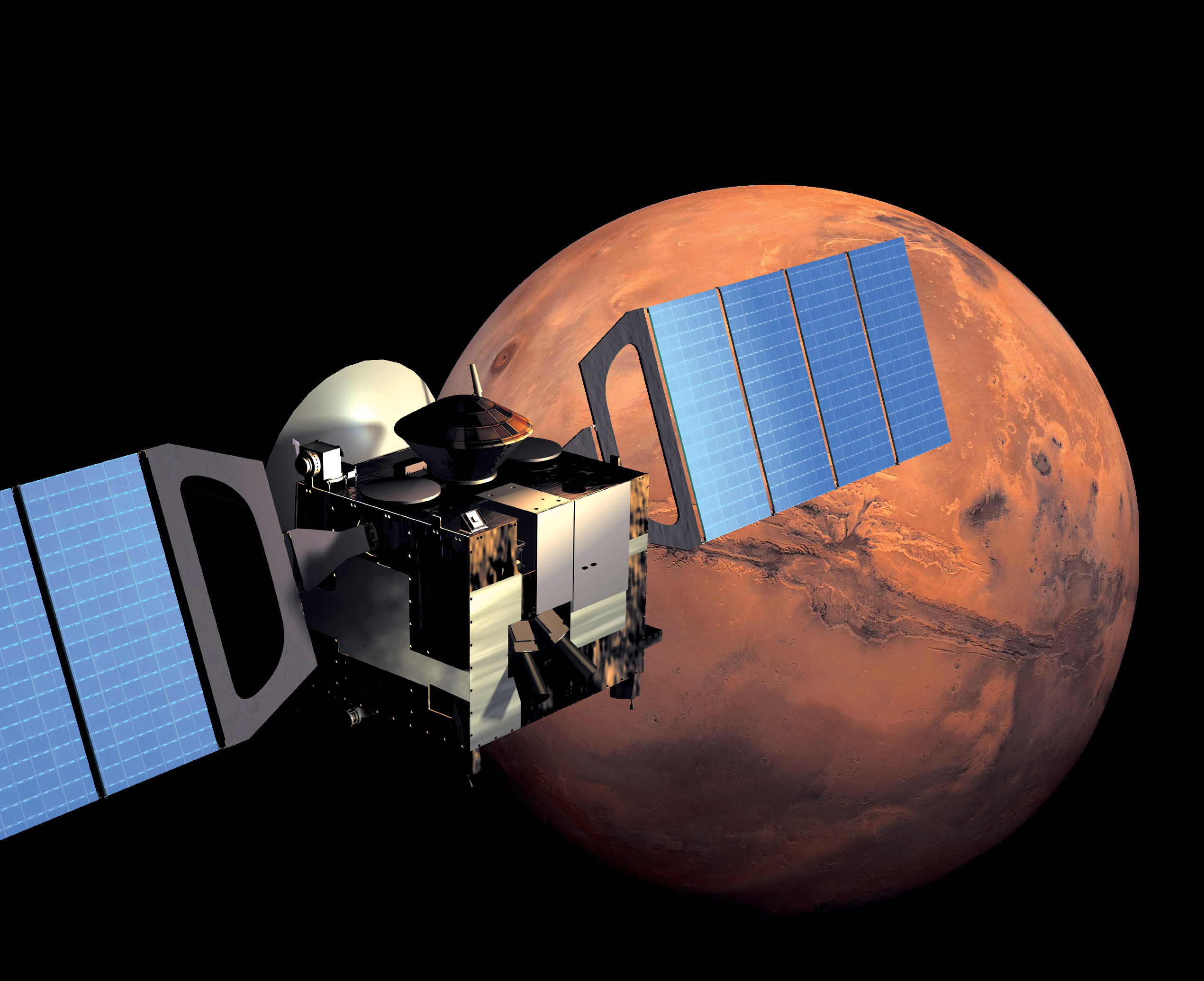Mars Express and the mystery of Phobos
01 March 2010
ESA’s Mars Express orbiter has been sending back remarkable images and other data since it reached the Red Planet in December 2003. Although Mars is its primary target, the spacecraft’s polar path sometimes carries it near Phobos, the larger of the planet’s two moons. During the latest series of flybys, between 16 February and 26 March, Mars Express will set a new record by skimming within 50 km of its surface on 3 March. The data collected during these close approaches may help to solve some of the mysteries surrounding the intriguing little satellite.
Images sent back from Mars Express and other spacecraft show that Phobos is a battered, potato-shaped rock less than 28 km across. It follows an almost circular, equatorial path, about 6000 km above the planet’s surface. In order to avoid crashing into Mars, it has to travel very quickly around its orbit. Each circuit lasts 7 hours 39 minutes, so someone standing on the planet would see Phobos cross the sky, from west to east, three times a day.
Most scientists believe that this small space rock is an asteroid that wandered too close to Mars and was captured by its gravity. However, it is very hard to explain how Phobos reached its present orbit. Most captured moons follow very elliptical (egg-shaped) orbits far from their planet. Mars Express may help to solve this mystery. By studying the way in which the gravity of Phobos tugs on the spacecraft and alters its orbit, scientists will learn more about the moon’s interior. Previous data have suggested that Phobos may be a porous rock pile, with many empty spaces.






